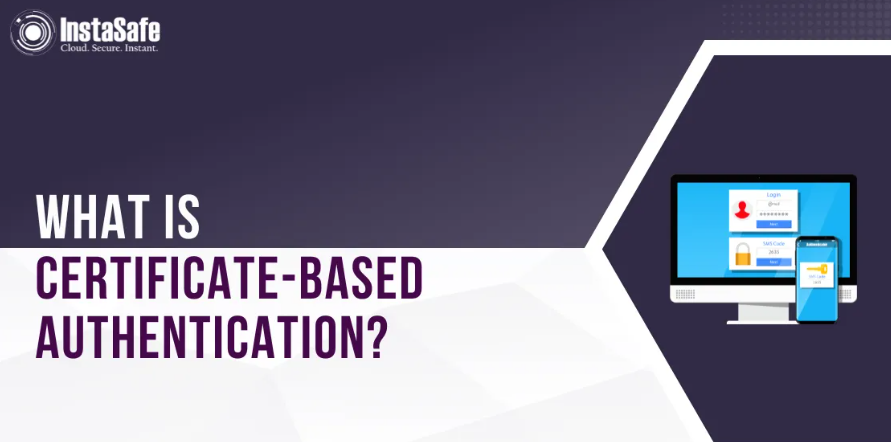Organisations and businesses are constantly on the lookout for good security options when it comes to authentication technology, and all of this is to block unauthorised visitors on their network.
Nowadays, Certificate-based Authentication is gaining traction for all the right reasons. This mechanism utilises digital identities or certificates as a security strategy to provide a more reliable means of authorisation and verification for authentication of the user’s identity.
How do we leverage digital certificates for network security, and how does it work? This blog talks about these aspects of Certificate-based Authentication!
What is Certificate-based Authentication?
There are digital documents known as digital certificates that utilise various other technologies to protect the data exchange in transit. These certificates are considered a higher level of legitimate documents to prove a website’s or individual’s authenticity.
When an authentication procedure leverages these digital certificates to authenticate the user’s identities, it is called Certificate-based Authentication. This procedure can be part of multi-factor authentication or a standalone authentication process. However, with the public key infrastructure of certificates, it creates layers of security.
How does Certificate-Based Authentication Work?
1. User Access Request
When the user first tries to access the certificate-based authentication configured network, it triggers and initiates the procedure of access request to the network, application, or server.
2. Certificate Issuance
The server will provide the user with their public key infrastructure certificate, establishing PKI-based authentication. This means that the user receives their certificate that includes their identity and verification information for the system to recognise and authorise them. The user then validates this certificate.
3. SSL Channel Enabled
Once the certificate is validated by the Certificate Authority (CA) and then the user, both the participants establish a session that is secured by either a Secure Socket Layer (SSL) or Transport Layer Security (TLS).
This enables and establishes SSL Certificate-based Authentication. This certificate creates a secure layer of encryption on the communication, and enables confidentiality and integrity.
4. Authentication
Later on, once the user has registered their digital certificate when the user tries to log into the server, the server will request their certificate and verify the registered data. This keeps the trust and integrity of the communication intact.
This is how the certificate-based authentication works towards enhancing the security of the network. When the communication between the user and the server becomes private and protected, any unauthorised party cannot peep into it to gain any unauthorised information.
Certificate-based Authentication Examples
- Digital payment portals for banks or applications that deal with the purchase and sale of goods and services.
- To provide remote access to employees or members of the group to the corporate networks.
- We can use this authentication to provide access to resources like Wi-Fi and other applications.
- Healthcare security systems can make great use of certificate-based authentication to access personalised data on patients’ health in the organisation’s database.
Ending Note
As a form of security solution, certificate-based authentication is an extremely valuable addition to authentication procedures. It offers better security with the help of its public key infrastructure and encryption technology and offers greater levels of confidentiality than any other solution.
Opting for certificate-based authentication can be a really good step for your organisation’s security!










